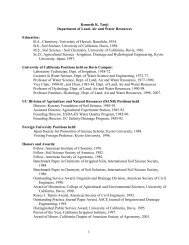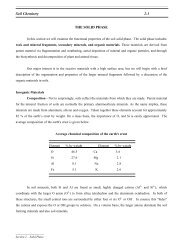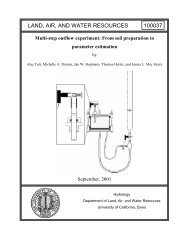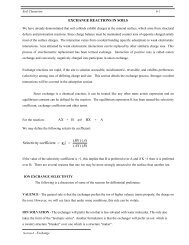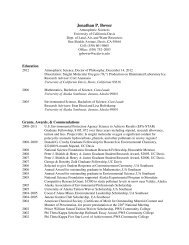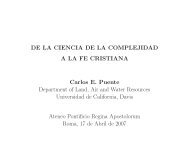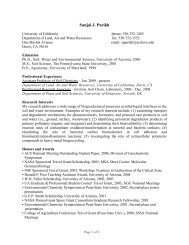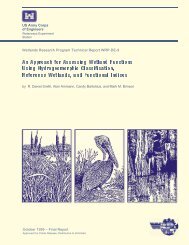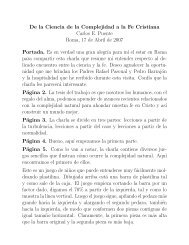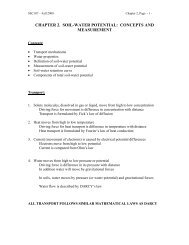Chapter 3. Saturated Water Flow - LAWR
Chapter 3. Saturated Water Flow - LAWR
Chapter 3. Saturated Water Flow - LAWR
You also want an ePaper? Increase the reach of your titles
YUMPU automatically turns print PDFs into web optimized ePapers that Google loves.
SSC107 – Fall 2000 <strong>Chapter</strong> 3 Page 3-2<br />
Pressure difference across tube = P 1 - P 2 (N/m 2 ).<br />
Do force balance on cylindrical water volume with r radius r < R.<br />
Pressure force across two ends = (P 1 - P 2 ).A = ∆P πr 2<br />
Shear force on external area of water volume = τ(2πrL)<br />
Equating these 2 forces leads to: τ = ∆Pr/2L<br />
Earlier we found that τ = -υ dv/dr<br />
Equate and put terms with r together on left-hand side and integrate from r to R (v=0):<br />
rdr = - 2L υ<br />
∆P dv<br />
R<br />
∫<br />
r<br />
rdr = -2L υ<br />
∆P<br />
0<br />
∫<br />
v<br />
dv<br />
∆<br />
yields v(r)=<br />
P<br />
4L ( R 2 - r 2<br />
υ<br />
)<br />
When plotting velocity as a function of radius r, its distribution is parabolic:<br />
R<br />
Radial<br />
position, r<br />
0 <strong>Water</strong> velocity v(r ) v max<br />
✪ For which value of r is the water velocity at its maximum ?





